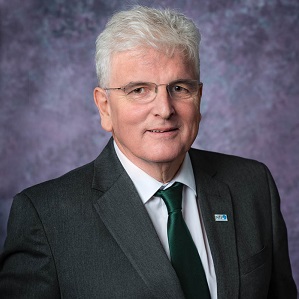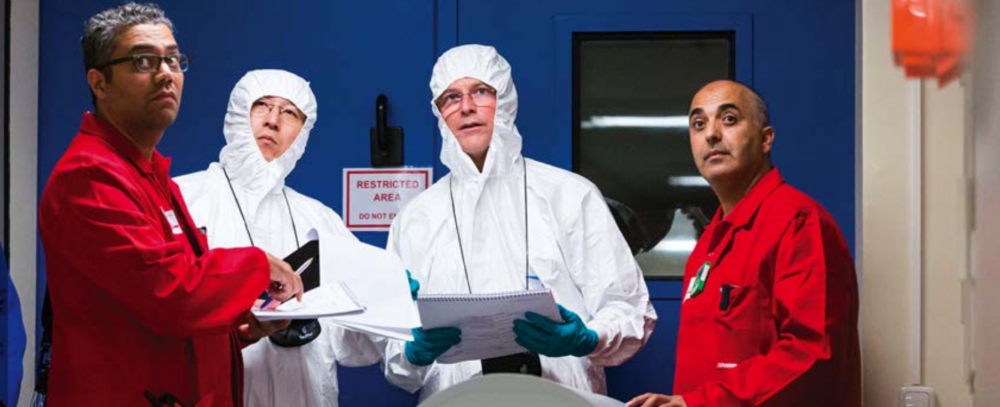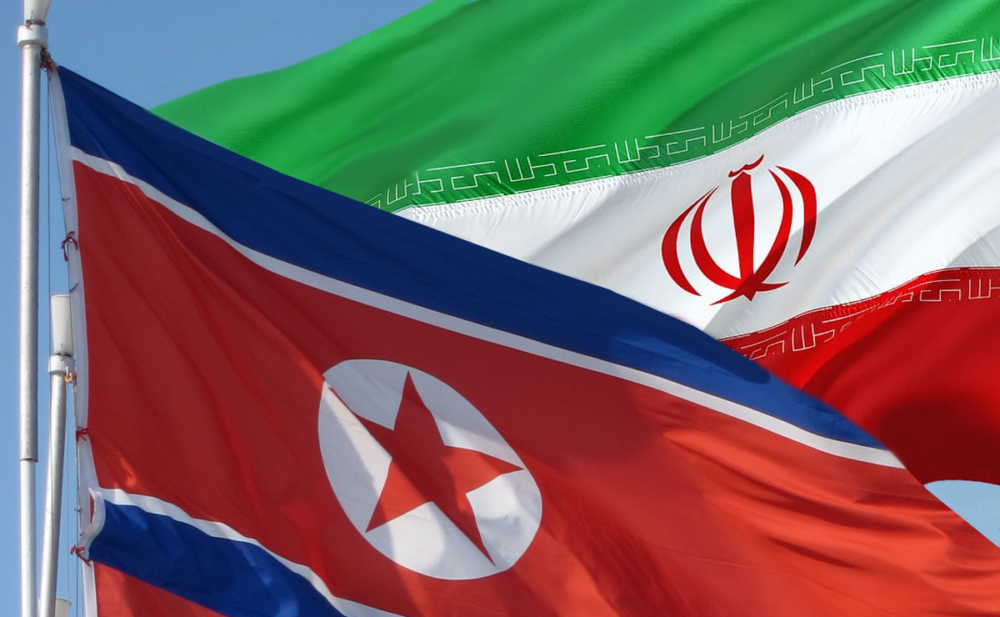
Des Browne
Vice Chair, NTI
Thank you very much for the kind introduction. It is a pleasure to be back with the Vienna Center, and I am delighted to join the discussion on verification. It is crucial for the future of arms control and nonproliferation.
The Center, under Elena’s leadership, is doing important work to boost analysis, dialogue and engagement on the issues around disarmament. Since opening its doors in 2011, the Center has hosted policy events for hundreds of experts and government officials, and it has promoted education and awareness around the importance of disarmament and non-proliferation. This verification workshop is a key element of that work.
We can all be grateful also for the support of Bill Potter and the Center for Nonproliferation Studies, which supports the Vienna Center. So thank you, Elena and Bill. I appreciate the invitation to be here with you today.
I also would like to make special mention of a few participants:
The topic of this workshop, Nuclear Verification Challenges and Opportunities, is dear to me, and I am encouraged to see it getting the analytic attention it deserves. It is an issue I have been focused on for quite some time. As some of you may recall, when I was serving in the UK government, I was the first Defense Secretary ever to address the United Nations Conference on Disarmament in Geneva. It was unprecedented for a top Defense official to call on the Nuclear Weapon States to take measurable steps toward fulfilling their disarmament obligations. The international community, I said at the time, needed a transparent, sustainable and credible plan for multilateral disarmament. One tangible way to make progress toward that goal was to work on the development of an effective and mutually trusted verification regime. And it would have to be a regime that would accomplish two things: 1) it would not give away national security or proliferation-sensitive information and 2) it would be shared between Nuclear Weapon States and Non-Nuclear Weapon States.
That speech was more than six years ago now – a very different time, of course, with respect to our efforts toward disarmament and nonproliferation, though the goals are the same.
The last time I spoke at the Vienna Center, it was in my capacity as Convenor of the European Leadership Network. Today, I come to you proud to have added another hat to my repertoire, that of vice chairman of the Washington-based Nuclear Threat Initiative. NTI, as many of you know, is a direct-action NGO that undertakes, among other things, projects aimed at making progress on what George Shultz, Bill Perry, Henry Kissinger and Sam Nunn identified as the key steps toward the ultimate vision of a world without nuclear weapons. They did so in a series of Wall Street Journal op-eds, beginning in 2007, that energized the arms control community worldwide and provided a template for the agenda President Obama laid out in Prague in 2009.
Over the past two years, I am pleased to report, my colleagues at NTI have been working with more than 40 technical and policy experts from a dozen countries on an innovative project on verification. The participation of experts from around the world was central to the project because, although it may be a truism, it cannot be said enough when it comes to nuclear security: global challenges require global solutions.
Our project—“ Innovating Verification: New Tools and New Actors to Reduce Nuclear Risks”—is complete and we will be releasing a set of reports encompassing confidence-building and transparency measures, as well as innovative new concepts. The reports will be available on NTI’s website, and if you contact us, we will be happy to send out printed copies. I hope you will read them and give us your feedback. The reports address verifying baseline declarations of warheads and materials, building global capacity for verification and the relatively new concept of societal verification and the promise it holds for supplementing government efforts.
Prospects for Disarmament and the P-5
But before I give you a fuller preview, let me say a few words about the upcoming NPT Review Conference and prospects for disarmament as I see them today.
I will say upfront that in our line of work, it is important to remain optimistic, even in the face of all evidence to the contrary. And I am optimistic. After all, we must remember that there is much good and important work being done to advance the cause of global security, including the humanitarian initiative that has taken hold in recent years. It is not a perfect process by any means, and it has clearly caused tension among nuclear weapon states. But the humanitarian conferences in Oslo and Mexico City have helped stoke global interest in disarmament – and efforts to build momentum toward our ultimate goal are certainly worthwhile. As I’m sure most of you know, Austria will be hosting the third humanitarian conference in December, and my two organizations—NTI and the ELN—have been working closely with Ambassador Kmentt and the Austrian government to try to encourage P-5 participation.
At the same time, there is no question that we are at a very precarious moment when it comes to prospects for the P-5 process and next year’s Nonproliferation Treaty Review Conference. The incremental approach to disarmament, to the bargain that the P-5 states – the United States, the United Kingdom, Russia, China and France – struck nearly 45 years ago now, is so painfully slow that it too often feels as if we are moving backwards not forward. And it’s difficult to see a path forward when the five states the Treaty recognized as Nuclear Weapon States can’t agree on how to proceed, and the Non-Nuclear Weapon States are angry about the pace of progress toward disarmament. This situation, in fact, is so bad that the upcoming 2015 NPT Review Conference has neither an agenda nor a leader at this point.
On the positive side, since I spoke to the Disarmament Conference in 2008, we have seen approval of the New START Treaty and some progress in negotiations around Iran’s nuclear program. Those are not insignificant developments.
But prospects for talks on additional reductions are dim at best. Much of our agenda is stuck – and we are clearly in an unfortunate place today, having squandered a recent period of opportunity for significant new progress on reductions.
The chilling effect of recent events in Ukraine is that our agenda today is in danger of being put into the deep freeze. Worse yet, the situation is not only straining relations between Russia and the United States, it may serve to boost the arguments of those who oppose reducing the role of nuclear weapons in NATO’s security construct.
But even before Ukraine made headlines, the slow-burning P-5 process was losing credibility. Launched by the UK in 2008, the group was set up to advance the fulfillment of promises made to work toward disarmament. The plan was for the recognized nuclear weapon states to work to solve some of the difficult technical issues impeding progress on disarmament.
As I told the Conference on Disarmament, the aim was “to promote greater trust and confidence as a catalyst for further reductions in warheads.”
Today, there is growing sentiment that the secretive P-5 process is impotent at best. Some believe it may actually be hampering progress. Meanwhile, we have seen over the years that states are expanding nuclear arsenals, surreptitiously seeking nuclear weapons under the guise of a civil energy program and detonating nuclear test devices in the face of international condemnation. These are not encouraging developments, to say the least.
In addition, despite all Ambassador Toth and Dr. Zerbo have done to encourage ratification of the CTBT, the process has been blocked in the U.S. Congress, and China won’t ratify until and unless the U.S. does.
At the risk of utterly depressing everyone here, I must add one more problem to the list – and that’s that all the nuclear weapon states today are working to modernize their arsenals, sending a powerful and unfortunate message about their lack of enthusiasm for arms control. In a groundbreaking report released earlier this year, CNS estimated that the United States alone will spend a staggering $1 trillion over the next three decades modernizing and maintaining its nuclear arsenal.
Still, we mustn’t allow this negative state of affairs to drain our resolve. It may seem hopeless today, but it’s important to remember that we will not always be in this moment. As the situation in Ukraine has demonstrated so clearly, the global security landscape can change unexpectedly and almost overnight. Fortunately, history has shown us that it also can change for the better. We can – and we must – work toward the day when it will change to favor our work and the work predicated by the NPT.
We also can take some solace in the axiom proffered by Dr. Zerbo in a speech to the National Seminar on the CTBT last October. “It is a well-known fact,” he said, “that frustration often paves the way for innovation.”
NTI’s Verification Project
On that note, as I mentioned, my colleagues at NTI have done some groundbreaking work on verification over the past two years with the help of dozens of experts and leaders from around the world.
The project grew out of our belief that it is time for the international community to rethink fundamentally the way it designs, develops and implements verification monitoring approaches for nuclear threat reduction and arms control treaties. But nuclear and non-nuclear states must work to build technical and policy capacity not just so they’re prepared for the next arms control treaty. They must build the capacity to help prompt new work toward disarmament, to help enable sweeping progress for global security, as well as to prevent proliferation and detect illicit nuclear programs. In other words, while lack of capacity on verification can act as a brake, adequate capacity can serve as an engine.
Let me give you one example of why it’s so important that all countries engage. Just imagine if countries were able to reach an historic agreement on a Middle East WMD-Free Zone. It would be a monumental step – but it would be marred by a major setback: not a single one of the regional actors would have the capacity or experience to verify it. Would they be willing to leave verification to outside groups? Not likely. Without the involvement of states in the region, it would be very difficult to move forward on work to reduce or eliminate weapons of mass destruction.
Another reason to ramp up our efforts is that over time, credible verification procedures will be ever more important. Here’s why: The more reductions states make, the more confidence they will require that no one is cheating and secretly retaining a marginal nuclear weapon. That makes it of paramount importance that verification techniques are developed which give all Nuclear Weapon States and Non-Nuclear Weapon States confidence that when a state says it has fully and irrevocably dismantled a nuclear warhead, it is telling the truth.
As Ronald Reagan said, quoting a Russian proverb: “Trust but verify.”
So NTI set out to identify and predict gaps in the world’s ability to verify future arms reductions, and we recommend a sustained international initiative to develop verification approaches for the future. Beyond preparing the world for new arms reduction agreements, as I said, the development of new approaches could reignite resolve around nuclear threat reduction. Accepted and tested methods for verification could jump-start new efforts toward a safer world.
There is historical precedent for this that should provide encouragement to those in the field. Beginning in the 1970s, a group of scientists and technical experts came together to support the negotiations of the Comprehensive Test Ban Treaty. Backed by governments, the experts developed monitoring and verification technologies, as well as data analysis methods, for a comprehensive test ban. Their work helped give negotiators confidence that they could conclude a treaty banning all nuclear explosions and implement the verification needed to support it.
Details of NTI’s Verification Project
So let me explain a little bit more about where we are today with respect to NTI’s project.
Working with senior leaders from across the U.S. government as well as from the UK, Norway and Sweden, the project tackled a set of foundational challenges to a solid verification regime and created three working groups to address them:
Each of the groups offered a host of specific recommendations toward building a solid global verification regime. But let me just give you a feel for some of the high-level themes that emerged.
NTI’s report calls on governments, scientists and technical experts to build on that work. They recommend that:
• The international community work to build and sustain a cadre of verification experts to expand the base of experts around the world, limited after years of inattention and underfunding.
The devil, of course, is always in the detail, and we will make sure that those of you who are interested in receiving and reviewing our reports can do so.
We know that these are very difficult topics, and it has been challenging but rewarding work. I admire you all for spending time here in Baden to address the need to build global skills in this important and too often overlooked area. And I encourage you again to engage with NTI and give us feedback on our project.
The international community needs a transparent, sustainable and credible plan for multilateral nuclear disarmament – and measures that can fulfill the requirements for the verifiable elimination of nuclear weapons are central to that plan. I am encouraged that high-level officials and experts have gathered here to work on this important issue, and I remain ever optimistic that we can make progress.
Once again, I appreciate the invitation to address this workshop and look forward to learning more about your good work in the future.
Thank you.
Sign up for our newsletter to get the latest on nuclear and biological threats.
NTI Co-Chair Sam Nunn discusses the agreement by the United States and North Korea to seek complete denuclearization and how to proceed through the disarmament process. He speaks with Bloomberg's David Westin on "Bloomberg Daybreak: Americas."
Ernest J. Moniz, the former US secretary of energy, is CEO and co-chair of the Nuclear Threat Initiative. In this op-ed, published in the Boston Globe, he discusses the powerful verification measures within the Iran Deal and the importance of staying in the agreement, particularly as talks with North Korea approach.

